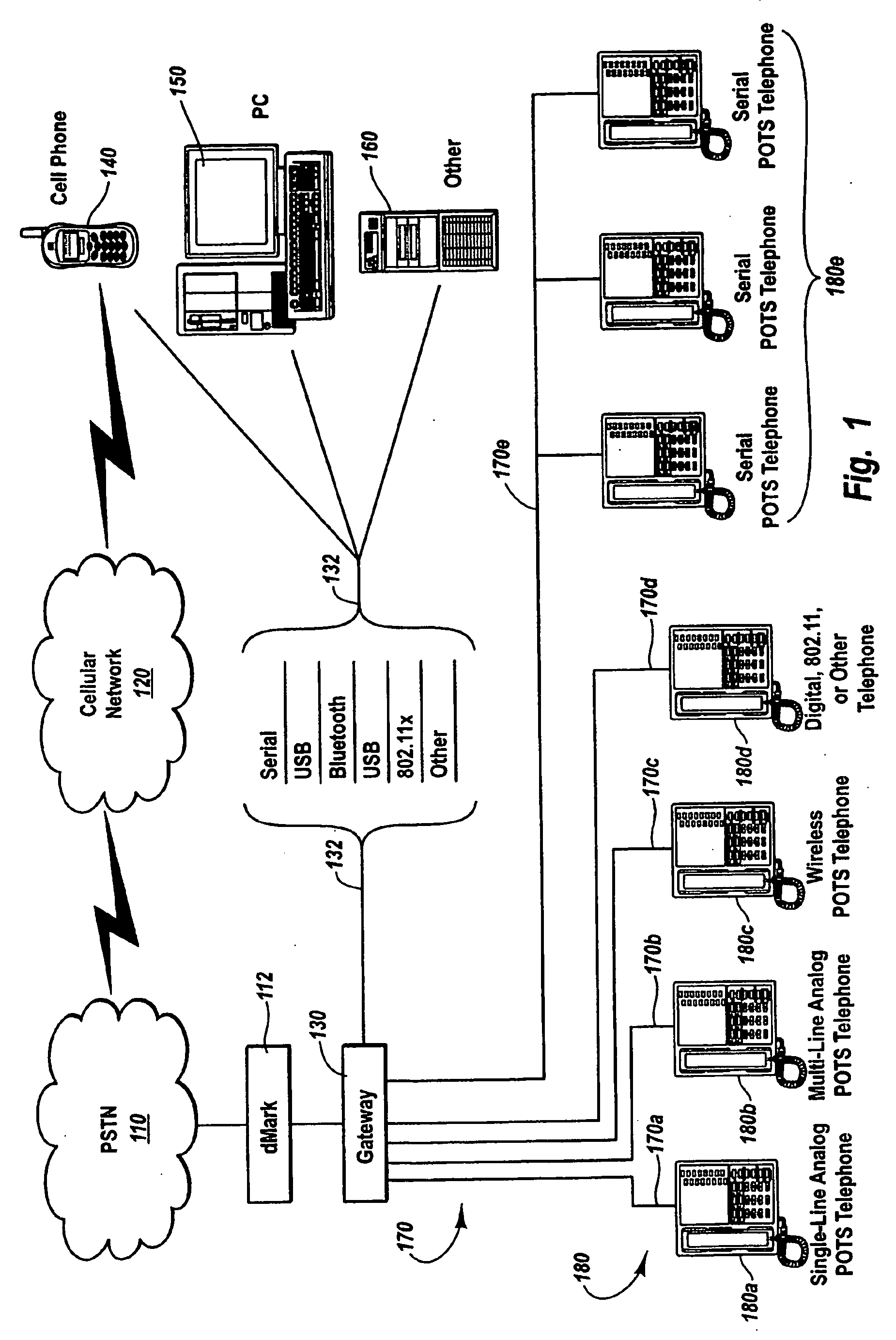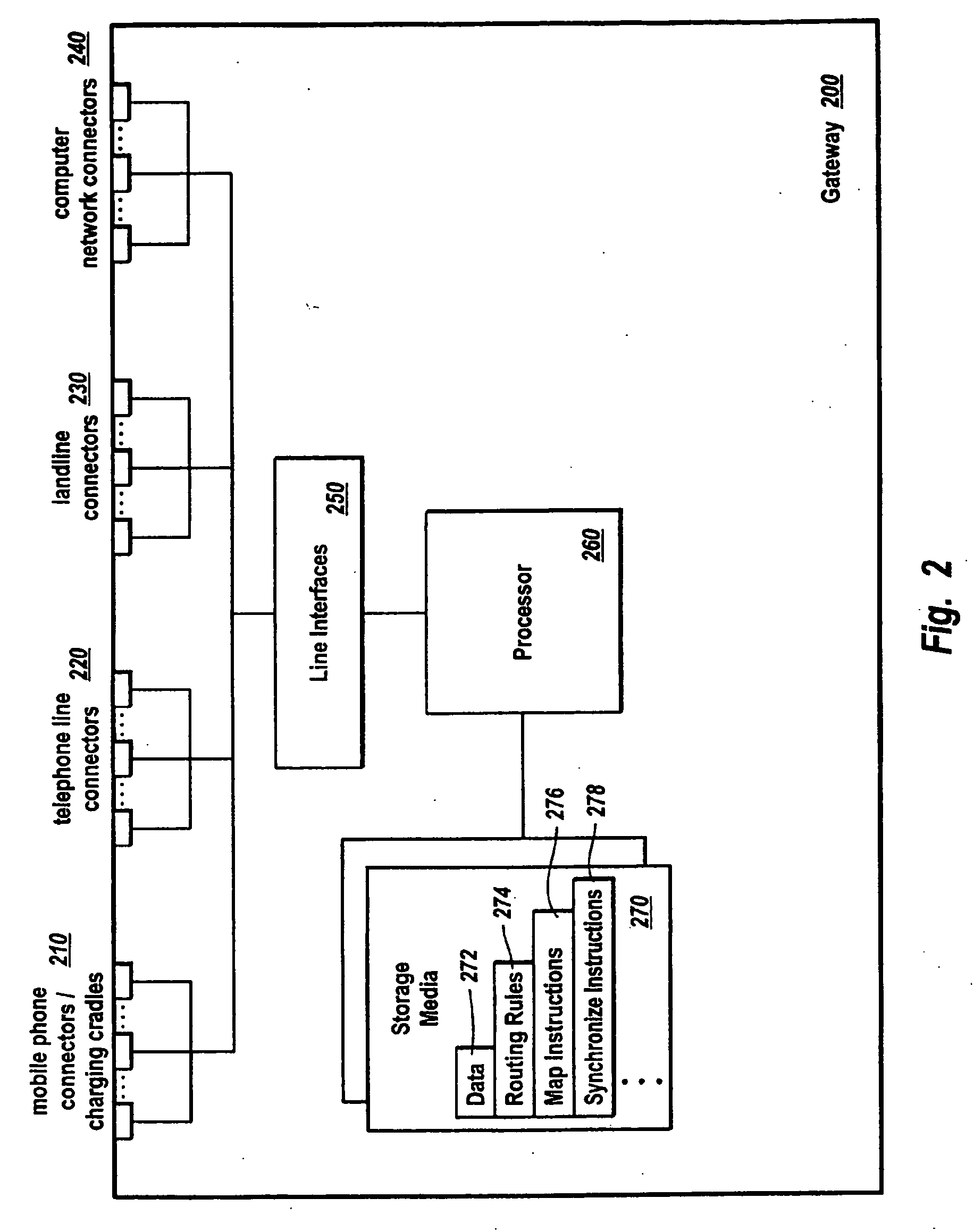Extending mobile phone networks
a mobile phone network and network technology, applied in the field of mobile phone networks, can solve the problems of large size, cost, and geographic coverage, limiting the use of most cellular phones to a business context, and users generally do not or cannot carry their cellular phones around
- Summary
- Abstract
- Description
- Claims
- Application Information
AI Technical Summary
Problems solved by technology
Method used
Image
Examples
Embodiment Construction
[0021] The present invention extends to methods, systems, and computer program products for bridging a mobile phone network and another telephone network. The embodiments of the present invention may comprise one or more special purpose and / or one or more general purpose computers including various computer hardware, as discussed in greater detail below.
[0022]FIG. 1 illustrates an example environment for practicing the present invention, where gateway 130 operates as a bridge between cellular network 120 and a telephone network with multiple individually addressable telephone lines 170 connected to telephones 180. Cellular network 120 may be any type of cellular network, including, for example, a GSM network, a TDMA network, or a CDMA network. GSM or global system for mobile communication is a digital mobile telephone system used widely in Europe and other areas. GSM is the most widely used of these three technologies and is a variation of TDMA. TDMA or time division multiple acces...
PUM
 Login to View More
Login to View More Abstract
Description
Claims
Application Information
 Login to View More
Login to View More - R&D
- Intellectual Property
- Life Sciences
- Materials
- Tech Scout
- Unparalleled Data Quality
- Higher Quality Content
- 60% Fewer Hallucinations
Browse by: Latest US Patents, China's latest patents, Technical Efficacy Thesaurus, Application Domain, Technology Topic, Popular Technical Reports.
© 2025 PatSnap. All rights reserved.Legal|Privacy policy|Modern Slavery Act Transparency Statement|Sitemap|About US| Contact US: help@patsnap.com



